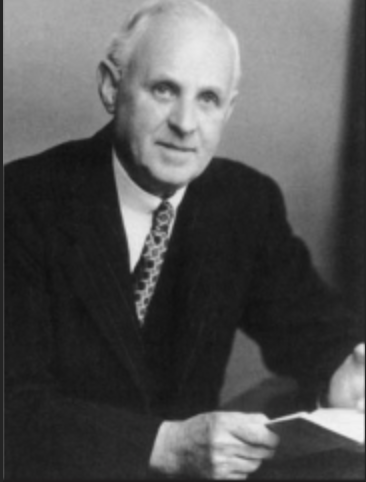Go back to startpage
.. Welcome in the year 1880 ..

Leonhard Bairstow (1880 - 1963), was an English aeronautical engineer. He played a crucial role in investigating
the crash of the British airship R101 in turbulent weather on October 5, 1930,
in France, shortly after 2 a.m. near Beauvais, approximately 100 km north of Paris. At that time,
the R101 was the largest flying craft, measuring over 220 meters in length. Forty-eight people died, which
was more than in the famous Hindenburg disaster in 1937.
Bairstow helped identify the structural failure that led to the crash, and he was awarded a knighthood by
King George VI. However, the king died before the ceremony could take place, making Bairstow one of the first
individuals to be knighted by Queen Elizabeth II (in 1952).
Additionally, Leonhard Bairstow became also renowned for developing a numerical method for finding the roots of polynomials
with real coefficients (as presented below). Bairstow published 1920 the book "Applied aerodynamics" (2nd enlarged edition in 1939).
Famous was the dispute (regarding the effects of viscosity) between Bairstow and the German fluid dynamicist and
aerospace scientist, Ludwig Prandtl (1875 - 1953).
For any real polynomial P(x) of grade > 1 holds:
a0xn + a1xn-1 + ... + an-1x + an = (x2 - px - q)(b0xn-2 + b1xn-3 + ... + bn-3x + bn-2) + bn-1(x - p) + bn
If that linear remainder polynomial vanishes, we have found a quadratic factor. A simple compair of coefficients we find without difficulties:
b0 = a0
b1 = a1 + pb0
bk = ak + pbk-1 + qbk-2
Assuming θ and ξ are solutions for f(x,y) = 0 and g(x,y) = 0.
So, θ = xk + ζk and ξ = yk + ηk and where ζk,ηk are the
"corrections", thats where Newton steps in by linearizing:
f(θ,ξ) = f(xk + ζk,yk + ηk) ~
f(xk,yk) + fxζk + fyηk
g(θ,ξ) = g(xk + ζk,yk + ηk) ~
g(xk,yk) + gxζk + gyηk
Let's define:
Λp := ∂/∂p, and ck-1 := Λp(bk)
Λq := ∂/∂q, and ck-2 := Λq(bk)
leading to:
ck = bk + pck-1 + qck-2, c-2 = 0, c-1 = 0, c0 = b0, c1 = pc0 + b1
b:(b0;b1:(p*b0)+a 1);
/b(k)=a(k)+pb(k-1)+qb(k-2);
bk:b,last each b fu1\2 _ a;
/c(k)=b(k)+pc(k-1)+qc(k-2);
c:(b0,b1+p*b0);
ck:c,last each c fu\2_bk
P(x) = 48x5 - 746x4 - 1019x3 - 695x2 + 9881x + 14212
1st run: p = -2, q = -3 (start values)
After 7 iterations. p will converge to -7/3 and q against -17/3, the quotient polynomial is: 8x3 - 858x2 + 711x + 2508
2nd run: p = 11, q = 4 (start values)
After 10 iterations. p will converge to 31/2 and q agaist 22, the quatient polynomial is: 48x - 114
So, P(x) = (8x - 19)(3x2 + 7x + 17)(2x2 - 31x - 44)
Go back to startpage